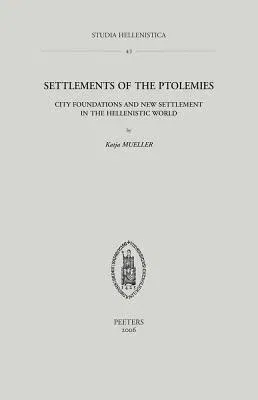K Mueller
(Author)Settlements of the Ptolemies: City Foundations and New Settlement in the Hellenistic WorldPaperback, 16 June 2006

Qty
1
Turbo
Ships in 2 - 3 days
Only 4 left
Free Delivery
Cash on Delivery
15 Days
Free Returns
Secure Checkout

Part of Series
Studia Hellenistica
Print Length
249 pages
Language
English
Publisher
Peeters
Date Published
16 Jun 2006
ISBN-10
9042917091
ISBN-13
9789042917095
Description
Product Details
Author:
Book Format:
Paperback
Country of Origin:
US
Date Published:
16 June 2006
Dimensions:
24.03 x
16.1 x
1.73 cm
ISBN-10:
9042917091
ISBN-13:
9789042917095
Language:
English
Location:
Leuven
Pages:
249
Publisher:
Series:
Weight:
421.84 gm